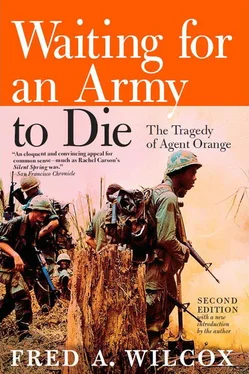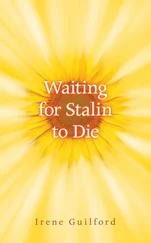In opposing the first of many motions to dismiss their complaint, Vietnam veterans and their families made it clear to the court that they did not want to become recipients of public assistance. They also expressed their belief that American taxpayers should not have to bear the burden of medical care and treatment for veterans and their children. They wanted, said the plaintiffs, “to compel the corporate defendants to make restitution to the American people by reimbursing those federal and state agencies that have provided benefits, medical care and treatment… for conditions attributable to the toxic effects of contaminated phenoxy herbicides…” 5They also wanted a resolution to the scientific controversy over the toxic effects of phenoxy herbicides contaminated with toxic synthetic organic chemicals “such as polychlorinated dibenzo-p-dioxins (PCDDs) and the polychlorinated dibenzo furans (PCDFs) fomented by the promotional efforts of the corporate defendants…” 6They challenged the claims of those who were still making phenoxy herbicides that their products were safe, and sought punitive damages in an amount that would “convince corporate management they serve as trustees of the public health, safety and welfare to an extent commensurate with the economic power and technological resources of the corporation they manage.” 7
The corporations, says Yannacone, owe the veterans a “non-delegable fiduciary duty of care,” a concept which, to proponents of laissez-faire, must sound like unadulterated socialism. But Yannacone argues that he and the consortium have taken this approach because they have no desire to bankrupt the chemical companies. Nor are they advocating nationalizing any of the Fortune 500. They are asking that corporations assume responsibility for their products from “cradle to grave” and that the task of monitoring the effect of a product on the environment and the health of the American people not be the sole responsibility of inefficient and frequently ineffective bureaucracies like the Environmental Protection Agency and the Food and Drug Administration.
“You see,” Yannacone explains, “the chemical companies manufacture a product, and if it doesn’t kill you within forty-eight hours of use, they assume that their responsibility toward the consumer is over. But we know that in the Agent Orange suit there may well be over forty thousand victims, [14] Although the class action suit has been filed on behalf of all veterans who served in Vietnam, the number of veterans who were listed as sick or dying at the time of the interview was approximately forty thousand. More veterans will undoubtedly be added to this list in the future.
and if each one asked for and was granted the appropriate amount of damages it would be possible to bankrupt all the companies we are suing. The whole thrust of this lawsuit is to impose on the chemical industry and its leaders a non-delegable fiduciary obligation as trustees of the public health, safety, and welfare to notify the public when there is any indication that there might be something wrong with the material being sold. We feel that Dow, Hercules, Monsanto, Diamond Shamrock, or Uniroyal are so large and their advertising promotion and public relations budgets so much greater than the federal regulatory budgets that this is hardly an unreasonable thing to ask. And I’m more than willing to pay the extra penny for the product to see the Dow diamond or some other symbol that I recognize, knowing that company will do what it can to make sure that the product is safe, and more efficient, because the company’s image is one of the long-term service to the public. And I would like to impose this obligation on these companies just as a matter of law. So in the Agent Orange class action suit we’re saying that if anyone has been injured, then the companies are responsible for the people whose health was damaged by their product.”
The class action is not only unique but ironic in many ways: 2.5 million Vietnam veterans suing chemical companies that were, theoretically, manufacturing a product that would save American lives in Vietnam; the chief attorney for the veterans confiding that he gets his most incriminating information on the effects of dioxin from scientists who work for one of the plaintiff war contractors; and the chemical companies arguing, they were just “following orders” when they made Agent Orange, some of which was fifteen to fifteen thousand times more contaminated with dioxin than the 2,4,5-T sold for domestic use.
Perhaps the most fascinating thing about Victor Yannacone is that while scientists may spend another decade quibbling over the effects of dioxin on human beings, and refusing, for one reason or another, to come to a conclusion that would affect governmental regulatory decisions, he has no doubts that dioxin is a killer. So little doubt, in fact, that he has put his legal reputation on the line and, because many of his veteran clients are impoverished, has worked for years with little remuneration to prove this point.
“There’s enough evidence to convict dioxin by even criminal standards today,” he says forcefully, half standing, pointing at me as though I am the jury that will decide the most important product liability case in the history of the United States. “If you had an alleged criminal with the kind of evidence against him that we have against dioxin, he’d be convicted no matter who was sitting on the Supreme Court or how the evidence was obtained. But just what do we know about Agent Orange? We know that during the Vietnam era eight million young men were in military service. And the average age was eighteen and a half years old, and those kids were duly certified by at least one and in some cases three agencies of the federal government as the healthiest people in America. The people who weren’t healthy stayed home. So we’re saying that if you count the cancers, birth defects, suicides, and serious illnesses among the 2.5 million that went to Vietnam and compare those statistics to the approximately six million who did not go—all of them chosen by the same rigorous standards—you will find that the group that went to Vietnam is much, much sicker than the group that didn’t. The kids in Vietnam were exposed to something that seems to have accelerated their aging processes. They are suffering from the diseases of old age, and they are only in their thirties.
“So we’ve established clearly that the Vietnam veterans are sick, and we’ve identified a known toxicant to which they were exposed that is capable of causing the illnesses or the aging that we see in the combat veterans. The burden now shifts to Dow, Monsanto, and the other manufacturers of toxic materials to show that it wasn’t their fault, that the products they have made didn’t poison our army. We’ve done our job. Let’s see what they’ve got.”
Unfortunately, seeing what they’ve got may take a lot longer than Yannacone or anyone involved in the case, with the possible exception of the war contractor defendants, had anticipated. By filing various motions to dismiss the Agent Orange suit, the defendants actually delayed replying to the suit for one year, and through appeals and other legal maneuvering more than three years will have passed before the “war contractor” defense is actually heard in court. Still, Yannacone has no doubt that he will win “on the merits of the case.” The government contractor immunity defense will be tried first, and if the “jury doesn’t buy it, then we go to trial on the issue of fault. That is: did the chemical companies make the product? Was it contaminated with dioxin? If it was contaminated with dioxin, did they know the dioxin was toxic, and did they have a duty to warn the Defense Department and the president during the war, and the veterans and the Veterans Administration after the war? If the answer to all those questions is yes, then the next question will be ‘What is it that dioxin can do?’ That’s the long trial: that will take some time. The others are relatively short. If we win and establish the toxicity of dioxin, then the cases go back to their individual jurisdictions where the individual veterans face their home juries and prove two things: first, that they were in Vietnam, and second, that they are sick.”
Читать дальше











